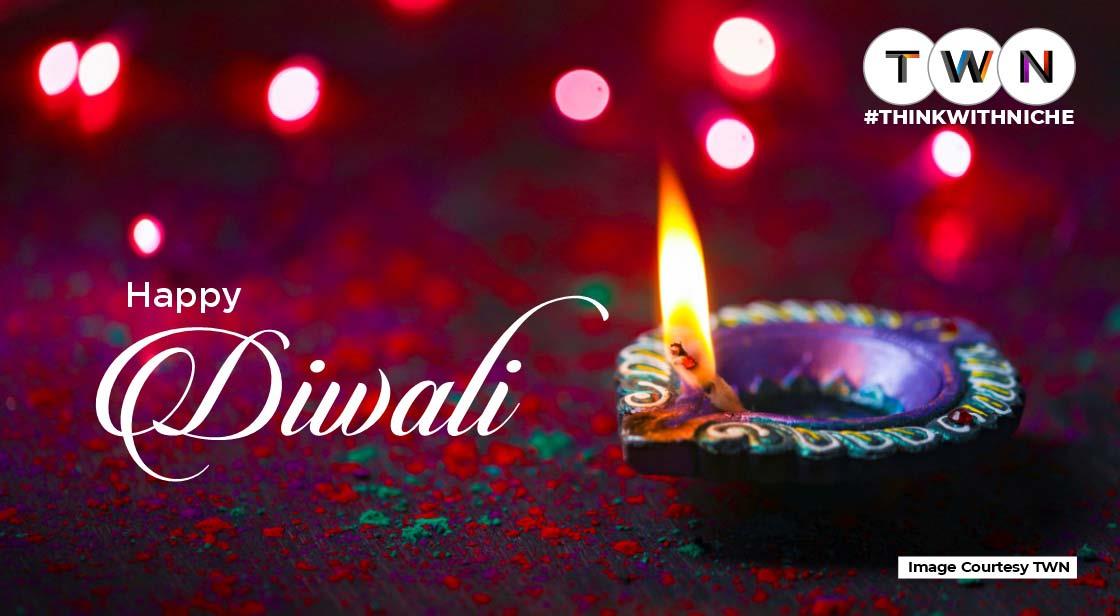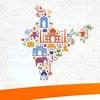Eco-Friendly Diwali 2025: Green Ways to Celebrate Without Pollution

Blog Post
Diwali, the festival of lights, is one of the most cherished celebrations in India, symbolising the victory of light over darkness, good over evil, and knowledge over ignorance.
Traditionally, homes are illuminated with rows of clay lamps (diyas), colorful rangoli designs are created, and families come together to share joy and festive treats. However, in recent years, the festival’s association with firecrackers has raised concerns about air and noise pollution, public health, and environmental damage.
As we approach Diwali 2025, it’s the perfect opportunity to rethink our celebrations and embrace an eco-friendly Diwali. By choosing sustainable practices—like lighting earthen diyas, using natural colors, gifting green presents, and avoiding harmful firecrackers—we can preserve the festival’s essence while protecting our environment.
This guide explores the significance of Diwali, its traditional celebrations, and practical ways to enjoy a greener, safer, and more mindful festival in 2025.
Happy Diwali 2025
India's biggest and most significant holiday of the year is Diwali, also known as Dipawali. The row of clay lamps (deepa) that Indians light outside of their homes to represent the internal light that guards against spiritual darkness gave rise to the festival's name.
For Hindus, this event is just as significant as Christmas is for Christians. Diwali has developed into a national holiday that is celebrated by both Hindu and non-Hindu people.
Importance Of Diwali:
Diwali represents the spiritual triumph of good over evil, light over darkness, and wisdom over ignorance. The lights of Diwali symbolise a time to extinguish all of our evil intentions and fantasies, banish all shadowy forces, and give us the vigour and energy to continue spreading goodwill throughout the remainder of the year.
Days Celebrated On Diwali:
There are 5 days celebrated in Diwali -
Diwali 2025 Calendar: Dates, Muhurat, and Significance
The Amavasya (New Moon) phase will start on October 20, 2025, at 3:44 PM and end on October 21, 2025, at 5:54 PM. This period is considered highly significant for spiritual practices, rituals, and offerings.
The Lakshmi Puja Muhurat during Amavasya is observed from 7:21 PM to 8:19 PM, while the Pradosh Kaal falls between 5:51 PM and 8:19 PM, making it an ideal time for prayers and performing rituals, according to Drik Panchang.
Here’s a detailed 5-day Diwali 2025 calendar:
| Festival Name | Date | Day | Muhurat Timings | Significance |
|---|---|---|---|---|
| Dhanteras | Oct 18 | Saturday | 07:16 PM – 08:20 PM | Marks the start of Diwali celebrations. Homes are cleaned and decorated, and people buy precious metals like gold and silver to invite prosperity. |
| Narak Chaturdashi / Choti Diwali | Oct 20 | Monday | Abhyanga Snan (Oil Bath): 05:02 AM – 06:11 AM Lakshmi Puja Muhurat: 07:21 PM – 08:19 PM |
Celebrates Lord Krishna’s victory over the demon Narakasura. Devotees take an early morning oil bath to cleanse themselves. |
| Diwali (Main Festival) | Oct 21 | Tuesday | Lakshmi Puja Muhurat – 11:36 PM to 12:26 AM | The main day of Diwali is devoted to worshipping Goddess Lakshmi, seeking wealth, prosperity, and well-being. |
| Govardhan Puja | Oct 22 | Wednesday | 06:26 AM – 08:42 AM (Pratahkala) | Commemorates Lord Krishna lifting the Govardhan Hill to protect villagers from heavy rains. Devotees prepare and offer ‘Annakshetra’ (food offerings). |
| Bhai Dooj | Oct 23 | Thursday | 02:10 PM – 04:24 PM (Aparahna) | Celebrates the bond between brothers and sisters. Sisters perform aarti and apply tika on their brothers’ foreheads, praying for their protection and well-being. |
How Is Diwali Celebrated?
Diwali celebrations often included lighting clay lamps called diyas (inside and outside dwellings), intricate rangoli patterns, and fireworks. Diwali often evokes positive emotions like happiness and joy. Food plays a big part in the event, much like it does in most holidays around the world, especially delicacies like barfi and jalebi (fried bread soaked in syrup) (a fudge made with condensed milk and other flavours like pistachio).
Also Read: Raksha Bandhan: A Strong Bond Tied By A Delicate Thread
Why is Diwali Celebrated?
Every faith celebrates a unique Diwali legend and historical occasion. Diwali marks the day Lord Rama, his wife Sita Devi, and his brother Lakshmana return to their home country after 14 years of exile in one of the major Hindu myths.
The locals lighted a route for Rama after he vanquished Ravana, the demon king. Celebrations in various areas include reenactments of this tale.
Hindu mythology also associates Diwali with the day Lord Krishna vanquished the demonic Narakasura and set the inhabitants of his kingdom free. Lord Krishna made it a festive day after killing the demon. In some regions of India, people celebrate by burning the effigies of the demon kings from both tales.
During Diwali, people also honour the Hindu goddess Lakshmi. The romantic Diwali narrative claims that the goddess of prosperity, wealth, and fertility married Lord Vishnu, one of Hinduism's most revered deities, on the eve of Diwali.
Diwali overlaps with harvest and new year festivals in various civilizations. No matter whatever Diwali tale you celebrate, the day is always one of fresh starts and victory of light over darkness.
Fire Crackers And Their Effects On the Environment:
Bring joy home this Diwali, not illness. Diwali is a time of great excitement and joy. Diwali is a festival of lights, but in recent years, it has become more of a festival of fireworks than of lights. Today, Diwali festivities are deemed incomplete without the use of firecrackers, which briefly light up the entire sky but have detrimental effects on both our environment and our health.
Dust and other contaminants are more prevalent in the air because of firecrackers. After the fire, dust and pollutants containing substances like sulphur, zinc, copper, and salt start to collect in the exposed areas, where they start to harm our environment and maybe endanger our health.
Harmful Effects of Firecrackers: Why Eco-Friendly Diwali Matters
Firecrackers are an integral part of Diwali celebrations for many, but their adverse impact on health, the environment, and safety is increasingly alarming. Over the years, studies and reports from environmental agencies and public health experts have highlighted the serious consequences of bursting firecrackers. Here’s a detailed look at the main concerns:
1) Air Pollution
Firecrackers release a cocktail of harmful gases and fine particulate matter (PM2.5 and PM10) into the atmosphere. These pollutants include carbon monoxide (CO), sulfur dioxide (SO₂), nitrogen oxides (NOx), and heavy metals like lead, zinc, and copper, which are used to create vibrant colors. When inhaled, these pollutants can cause respiratory problems, aggravate asthma, and trigger lung infections. According to a 2023 report by the Central Pollution Control Board (CPCB), air pollution levels in many Indian cities spike up to 30–40% above safe limits during Diwali, particularly in the evening and night hours when firecrackers are most widely used.
2) Noise Pollution
The loud explosions of firecrackers contribute to severe noise pollution, which can directly affect human health. Noise levels during Diwali can reach 100–120 decibels, exceeding safe hearing thresholds. Prolonged exposure to such noise can cause hearing loss, stress, hypertension, and even heart complications. Elderly individuals and children are particularly vulnerable. The World Health Organization (WHO) recommends a maximum noise level of 55 dB for residential areas during the day and 45 dB at night, highlighting how Diwali firecrackers far exceed safe limits.
3) Contribution to Global Warming
Burning firecrackers releases significant amounts of carbon dioxide (CO₂) and other greenhouse gases into the atmosphere, contributing to global warming. Each burst of firecrackers produces heat and particulate pollutants, which can linger in the air for hours, trapping heat and worsening air quality. A study published in Environmental Research Letters (2024) noted that Diwali celebrations contribute a measurable increase in atmospheric pollutants, exacerbating climate change and urban heat island effects.
4) Health Risks for Vulnerable Groups
Firecrackers pose severe risks to newborns, pregnant women, and individuals with pre-existing respiratory conditions such as asthma, bronchitis, or COPD. The tiny particles released during combustion can penetrate deep into the lungs and bloodstream, causing short-term effects like coughing, eye irritation, headaches, and dizziness, and long-term effects like cardiovascular complications. Animals, including pets and street animals, are extremely distressed by the noise and smoke, often leading to panic, injury, or fatal accidents.
5) Fire Hazards and Accidents
Firecrackers are a significant source of fire-related accidents during the festive season. Mishandling crackers can cause burns, explosions, and fires that damage homes, shops, and vehicles. According to the National Crime Records Bureau (NCRB, 2023), Diwali-related fire accidents account for thousands of injuries each year, including burns and respiratory damage. The combination of careless handling, crowded markets, and dry conditions in October can make firecrackers extremely dangerous.
What is An Eco-friendly Diwali?
An eco-friendly Diwali celebration consists solely of celebrating without endangering our ecosystem, which is made up of all living things. One can begin by just lighting diyas and staying away from firecrackers that are loud and smoke-filled.
Importance Of Eco-Friendly Diwali
1) Eco-friendly Diwali aids in lowering air and noise pollution.
2) Earthen diyas are ideal because they are simple to dispose of without damaging the environment.
3) Loud noises can be very problematic for elderly persons.
4) Selecting eco-friendly products minimizes energy usage immediately.
5) Give a plant to your loved ones if you want to give green presents.
6) Following an eco-friendly lifestyle will help you reduce accidents.
How To celebrate Eco-friendly Diwali?
1) Make Rangoli with flowers or natural colors.
2) Use paper for gift wrapping.
3) Use earthen diyas instead of candles to lighten your house.
4) Gift handmade products.
5) Do not burst firecrackers or prefer eco-friendly firecrackers.
6) Donate old belongings.
Conclusion:
This Diwali, let’s embrace the spirit of light without harming our environment. By choosing eco-friendly practices—lighting earthen diyas, avoiding loud and polluting firecrackers, using natural colors for Rangoli, and gifting sustainable products—we can celebrate responsibly while protecting our health and the planet.
An eco-friendly Diwali not only preserves nature but also spreads true joy, positivity, and harmony among families and communities. Make this festive season memorable by celebrating sustainably and inspiring others to do the same.
You May Like
EDITOR’S CHOICE












